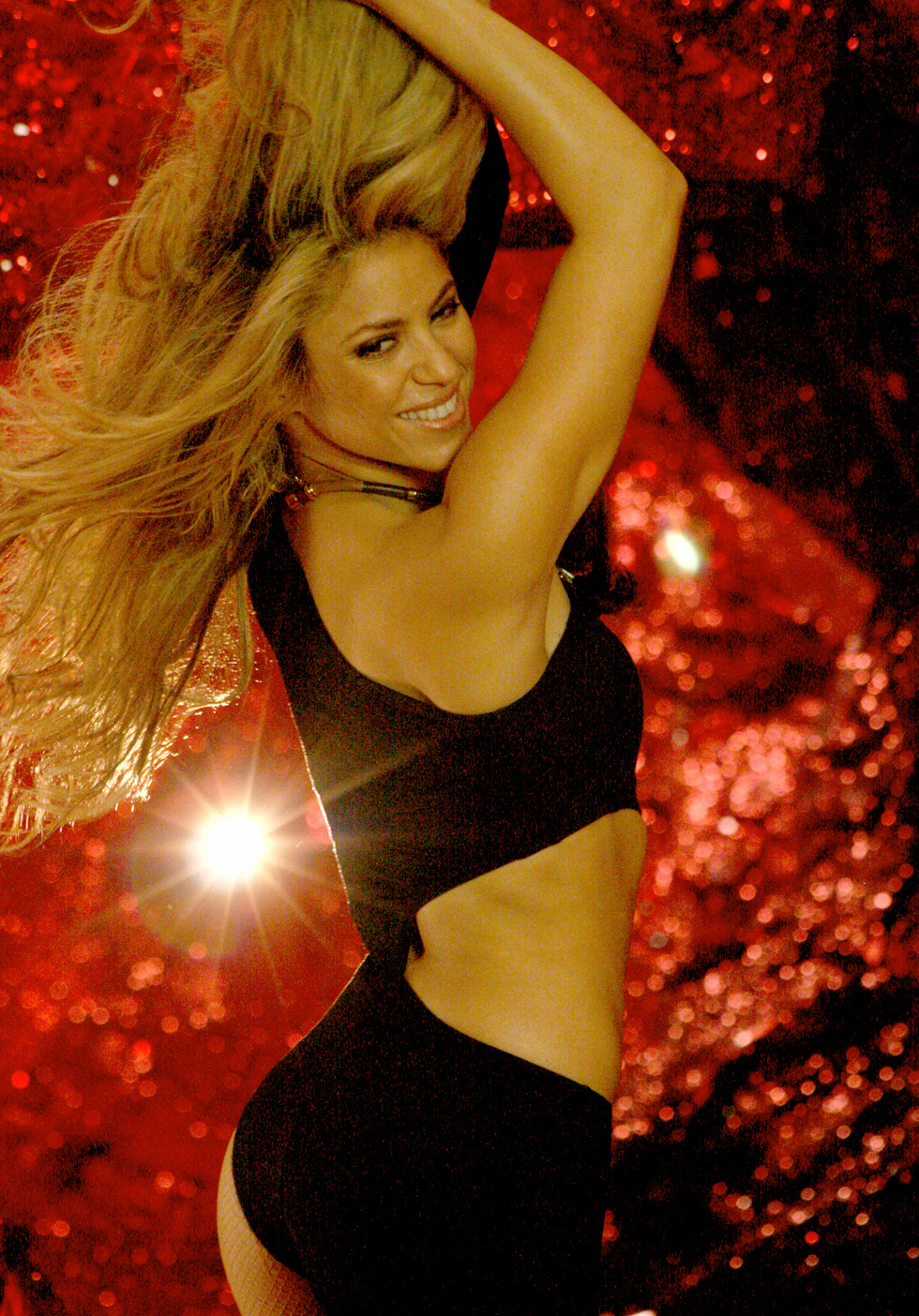"The image of the she wolf just came to my head, and when I least expected it I was howling and panting." — Shakira
"You don't think for one note that she's trying to speak to any issue other than her libido, and she creates a world where not only is this acceptable, but it makes perfect sense." — Consequence of Sound
"And for as sexy as Shakira is—crucially, her music is sexy too—what really gives She Wolf its bite is her inspired nuttiness." — Billboard
"I know what I'm doing even when I'm wearing a pencil skirt." — Shakira
*****
Werewolves have been on my mind a lot lately, or, even more so than usual. It is Halloween, after all. I recently revisited the movie Silver Bullet—it's even better than I remembered!—followed immediately by a first-time watch of the total stinker Bad Moon. To cleanse myself of that film's lingering disappointment, I started ruminating (as I do often) about another favorite, Mike Nichols's Wolf, featuring one of my favorite man-as-wolf metaphors in all of werewolf cinema. This, of course, led me to further rumination, this time on a favorite subject—namely, Michelle Pfeiffer's exquisite performance as Laura Alden (which I've written about several times previously, and discussed on a podcast), and how the film's finale evinces a notable shift in power from the decidedly male perspective to the female, thanks to—spoilers!—Laura ending the film cursed with the wolf's blood. A stunning final shot composed of a zooming close up of her glowing eyes cements Laura's transformation into a supernatural being. The she wolf is born.
Naturally, then, Pfeiffer's she wolf led my brain straight to Shakira's 2009 single from the album of the same name, "She Wolf." What's that, you ask? Seems like quite the pop culture leap, no? Not really. Like Laura in Wolf, Shakira's narrator in "She Wolf" has her eyes "wide open" and rebels against societal norms that want to keep her "domesticated." Check out a sampling of lyrics from the song:
A domesticated girl that's all you ask of me
Darling it is no joke, this is lycanthropy
Moon's awake now, with eyes wide open
My body is craving, so feed the hungry
And how about:
There's a she wolf in the closet
Open up and set her free (ahoo)
There's a she wolf in the closet
Let it out so it can breath
Let it out so it can breath
Sitting across the bar, staring right at her prey
It's going well so far, she's gonna get her way
Nocturnal creatures are not so prudent,
The moon's my
teacher, and I'm her student
These overt references to werewolf mythology serve as metaphors for female desire, which in my mind slots "She Wolf" alongside Wolf and other werewolf-themed movies that similarly contend with she wolf lore, especially Joe Dante's The Howling and John Fawcett's Ginger Snaps. The she wolf is central to Roman foundation mythology, yet in more modern times the moniker has regularly been used as a pejorative for predatory women. The she wolf trope is often rife with pointed commentary on male fear of female sexuality. Shakira's "She Wolf" and the films mentioned earlier are good examples of this.
"She Wolf"—both in the song and its visually stunning video—explores a feminine yearning to break free from the literal and figurative cages (often constructed by men) that confine women's explosive femininity. Shakira has said the song was her way of processing feeling lonely and unloved within a relationship. While she doesn't actually transform into a hairy wolf in the video, using the she wolf metaphor to express pent-up desires adds a supernatural element to the song that positions it perfectly within the realm of she wolf literature and film.
In the video, directed by Jake Nava, Shakira's patented, jaw-dropping body contortions only enhance the metaphoric concept, as she grooves to the ridiculously catchy and oh-so-glossy, Italo-disco sound. Shakira's moves have always been mesmerizing, and with the "She Wolf" video she elevated these mythic powers of astonishing body undulation to all new, dizzying heights.
Trapped in a cage, she writhes, slinks, back-bends, and swings from the bars—a caged wolf/woman (she wolf) aching to break free. If the way she moves—with a ferocious, rhythmic sensuality—doesn't qualify as supernatural, I don't know what does. Her dancing is the very definition of something beyond both scientific understanding and the laws of nature. She is She Wolf, hear her roar.
This excerpt from Slant Magazine's 2009 review of the She Wolf album notes the song's camp appeal being central to its success:
The song’s lyrics walk a fine line between campy and really campy (“I’m starting to feel just a little abused like a coffee machine in an office”), but Shakira’s ability to make likening oneself to a kitchen appliance sexy with just a simple moan is unrivaled.Shakira certainly does have a way of making that coffee machine metaphor sexy. "She Wolf"'s willingness to be campy is another reason it's a worthy addition to the werewolf cannon, as the song's camp aesthetic lends a cult movie feel to it all. Werewolf films and pulp novels were always flirting with elements of camp—for example, watch Jack Nicholson and James Spader, in partial-wolf transformation mode, clawing and pawing at each other in the climax of Wolf and try not to snicker.
"She Wolf" turned ten this year, and for my money it's still an excellent musical distillation of the she wolf in contemporary pop culture, and especially on its implications on the power of female sexuality and desire to overcome male suppression. With her performance in the video, Shakira makes it abundantly clear that this power is hers to wield, and no one can keep it, or her, caged for long.








Comments
Post a Comment